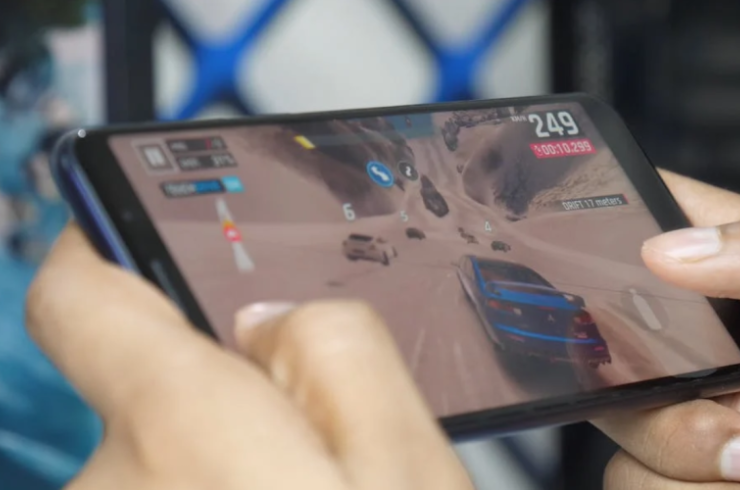- 08-12-2023
Unlocking Revenue Potential in Mobile Gaming: Mastering In-App Purchases and Advertising Tactics

Mobile gaming has transformed into a lucrative industry, driven by the widespread adoption of smartphones and the increasing quality of mobile games. However, with millions of apps available for download, competition is fierce. For developers and publishers, the challenge lies not only in creating a captivating game but also in successfully monetizing it. In this article, we will explore the intricacies of in-app purchases and advertising strategies that can maximize earnings in the mobile gaming sector.
Crafting a Winning In-App Purchase Model

The advent of in-app purchases (IAP) has revolutionized the mobile gaming revenue model. By offering players the option to buy virtual goods or benefits, developers can significantly enhance their earnings. However, designing an IAP system that is both profitable and player-friendly requires a delicate balance.
Firstly, it's critical to understand the different types of in-app purchases available. Consumables, such as in-game currency or power-ups, are one-time-use items that can drive recurring revenue as players make repeat purchases. Non-consumables, including cosmetic upgrades or ad removal, provide permanent benefits and are typically sold at a higher price point. Lastly, subscriptions offer ongoing content or benefits and can generate a steady income stream.
To maximize earnings, developers should focus on creating value for players through their IAP offerings. This can be achieved by ensuring that purchases enhance the gaming experience without making the game pay-to-win. Additionally, pricing should be strategic, often incorporating tiered options to cater to different spending capabilities.
It's also essential to integrate IAPs seamlessly into the game, making them easily accessible without disrupting gameplay. Clear and transparent communication about what players are buying helps foster trust and can reduce potential friction. Moreover, time-limited offers and sales can incentivize purchases and drive short-term revenue boosts.
Finally, leveraging data analytics is crucial for optimizing the IAP model. By analyzing player behavior, developers can identify popular items, optimal price points, and potential areas for new products. Personalized recommendations and targeted promotions can also be used to encourage purchases among different player segments.
Navigating the Ad Monetization Landscape

While in-app purchases are a direct source of revenue, advertising represents an indirect approach to monetization. Integrating ads into a mobile game requires a strategic approach to avoid detracting from the user experience while maximizing ad revenue.
There are several ad formats to consider, including banner ads, interstitials, rewarded videos, and offer walls. Each format has its pros and cons, and the choice depends on the game's design and the player's tolerance for interruptions. Rewarded videos, for example, have gained popularity as they provide a value exchange — players receive in-game rewards for watching ads voluntarily.
To effectively monetize through ads, developers need to establish an optimal frequency and placement that minimizes player annoyance and maximizes visibility. It's also important to work with reputable ad networks that provide high-quality, relevant ads to maintain user engagement. Advanced ad mediation platforms can help manage multiple ad networks, ensuring that developers are always displaying the most profitable ads.
Moreover, understanding the metrics that drive ad revenue is essential. Effective Cost Per Mille (eCPM), click-through rate (CTR), and fill rate are key performance indicators that can help developers fine-tune their ad strategy. By continuously analyzing these metrics, developers can make data-driven decisions to enhance ad monetization.
Developers should also consider the potential of dynamic ad pricing models, such as real-time bidding (RTB), where ad inventory is auctioned off in real-time to the highest bidder. This approach can increase ad revenues by serving the most competitive ads to players based on demand.
Balancing Monetization with Player Experience

A successful monetization strategy in mobile gaming should always consider the player's experience. Over-monetizing can lead to player churn, which ultimately harms revenue. Therefore, developers must achieve a balance that respects the player's enjoyment while optimizing earnings.
This balance can be achieved by designing monetization elements that feel like a natural part of the game. For instance, in-app purchases should be integrated into the gameplay in a way that they appear as optional enhancements rather than necessities. Similarly, ad placements should be thoughtfully timed, such as at natural pauses in gameplay, to minimize disruption.
Another key aspect is to provide players with choices. Giving players the option to watch ads in exchange for rewards or to make purchases to enhance their gameplay can lead to a more positive perception of monetization efforts. This also allows players to engage with the game on their terms, which can increase their willingness to spend.
It's also important to consider the diversity of the player base. Different players have different preferences and financial means. Offering a range of monetization options, from small in-app purchases to more substantial content expansions, can cater to a wider audience and maximize overall revenue.
Continuous testing and iteration are crucial to finding the right balance. A/B testing different monetization strategies can provide valuable insights into what works best for the specific game and audience. Developers can use this data to refine their approach and ensure that the monetization strategy evolves alongside player preferences and industry trends.
Encouraging Ethical Monetization Practices

As the mobile gaming industry grows, ethical concerns around monetization have come to the forefront. It's important for developers to adopt practices that not only maximize earnings but also maintain the integrity of the gaming experience.
One of the ethical considerations is transparency in in-app purchases. Developers should clearly communicate what players are buying and ensure that there are no hidden costs or misleading promotions. Additionally, protecting vulnerable players, such as children or those susceptible to excessive spending, is paramount. This can involve implementing spending limits or parental controls.
Another aspect is to avoid aggressive monetization tactics that can lead to player exploitation. This includes avoiding pay-to-win scenarios where spending money becomes the only viable way to progress in the game. Instead, developers should focus on creating fair and engaging gameplay that rewards skill and strategy.
It's also essential to respect player privacy when implementing advertising strategies. Ad targeting should be done responsibly, with user consent and in compliance with data protection regulations such as the General Data Protection Regulation (GDPR).
By prioritizing ethical monetization practices, developers not only foster a positive reputation but also build a sustainable business model. Players are more likely to remain loyal to games that respect their experience and treat them fairly, which can lead to long-term revenue generation.
Conclusion: The Future of Monetization in Mobile Gaming
The mobile gaming industry continues to evolve, and with it, the strategies for monetization. As technology advances and player preferences change, developers must stay ahead of the curve to effectively monetize their games.
Emerging trends such as cloud gaming, augmented reality (AR), and the integration of blockchain and non-fungible tokens (NFTs) open new avenues for monetization. These technologies can offer novel experiences and additional value to players, which can translate to new revenue opportunities.
Furthermore, the rise of social and multiplayer aspects in mobile games creates potential for community-driven monetization methods. Live events, battle passes, and social gifting are just a few examples of how developers can tap into the social dynamics of gaming to drive revenue.
The key to future monetization success lies in innovation, player-centric design, and ethical practices. By continuously exploring new monetization models, prioritizing the player experience, and committing to ethical standards, developers can not only maximize earnings but also contribute to a healthy and vibrant mobile gaming ecosystem.
In conclusion, understanding and implementing effective in-app purchase and advertising strategies are critical for maximizing earnings in mobile gaming. However, the ultimate goal should always be to create a harmonious balance between monetization and player satisfaction, ensuring the longevity and success of the game in the competitive mobile market.